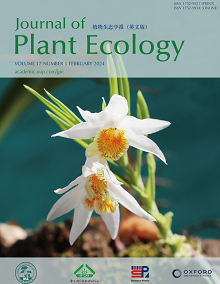Current Issue
-
 Volume 17 Issue 1
Volume 17 Issue 1
Inflorescence of Thunia alba (Lindley) H. G. Reichenbach. This terrestrial or epiphytic orchid is widely distributed in south-east Asia including south-west China, and usually grows on tree trunks or rocks. The most unique floral trait of T. alba is its conspicuously large bracts that enclose the spur and pedicel of flowers. By experimentally removed the bracts, its only pollinator Bombus breviceps shifted to rob nectar, resulted in a significant reducing of reproductive success in T. alba. The large bracts can protect against nectar robbers and enhance the fitness in this orchid. This study was conducted in an ancient tea garden in Xishuangbanna, Yunnan, China. Photo taken by Shi-Mao Wu. See Wu and Gao in this issue.
IF: 3.9
CiteScore: 5.7
CiteScore: 5.7
Editors-in-Chief
Yuanhe Yang
Bernhard Schmid
Yuanhe Yang
Bernhard Schmid
CN 10-1172/Q
ISSN 1752-9921(print)
ISSN 1752-993X(online)
ISSN 1752-9921(print)
ISSN 1752-993X(online)







